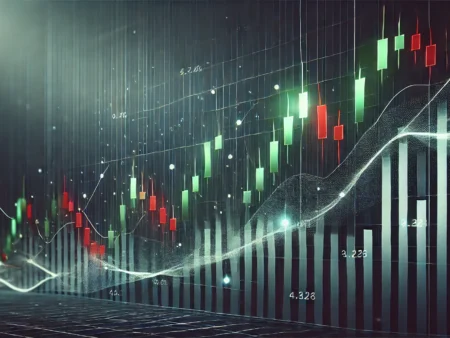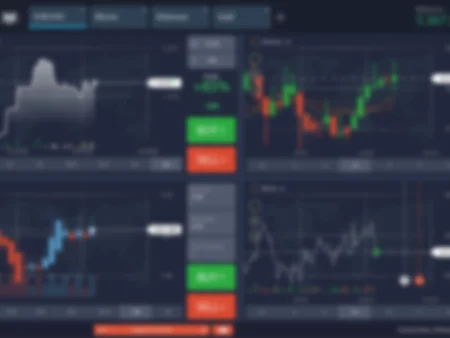News Trading Strategy: How to Trade Market Movements with Breaking News
In the fast-paced world of financial markets, staying ahead of major events can be a powerful strategy for traders looking to capitalize on price movements. One of the most exciting and potentially lucrative trading approaches is the news trading strategy. This strategy revolves around making trading decisions based on economic reports, earnings announcements, geopolitical events, and other forms of breaking news.
News trading leverages the volatility and sudden shifts in market sentiment that often follow major news releases. By understanding how and when to trade on news, you can ride short-term market swings to achieve potentially substantial profits. However, this strategy comes with its own set of risks and challenges, and knowing how to mitigate those risks is key to long-term success.
In this article, we’ll explore the news trading strategy in depth, including its advantages and disadvantages, as well as practical tips and tricks for using it effectively.
What is News Trading?
News trading involves making trading decisions based on key economic data releases or major news events that have a significant impact on the market. This could include anything from central bank interest rate decisions, non-farm payroll (NFP) reports, inflation data, or company earnings reports to geopolitical developments like elections, trade agreements, or military conflicts.
The strategy hinges on the idea that markets tend to react swiftly and sometimes dramatically to news, often resulting in increased volatility. For example, a positive earnings report from a major corporation may cause a stock to spike, while poor economic data from a key country can cause its currency to plummet.
News traders typically rely on both fundamental analysis (understanding the news event’s impact) and technical analysis (using charts and indicators to time their trades) to make their trading decisions.
The Positives of News Trading Strategy
- Significant Profit Potential:
One of the primary attractions of news trading is the potential for large profits in a short period of time. Since markets can react strongly to news, traders can take advantage of rapid price movements to capture significant gains within minutes or hours of a news release. For example, a surprisingly positive jobs report could cause the stock market to rally sharply, allowing traders who timed their entries well to make substantial profits. - High Volatility Equals More Opportunities:
Volatility is the trader’s best friend, and news events often inject a great deal of volatility into the markets. During high-impact news releases, prices can move dramatically, creating numerous trading opportunities for those who know how to capitalize on these movements. Skilled news traders can enter and exit trades quickly, profiting from the extreme short-term price swings. - Clear and Defined Entry Points:
News traders often have clear and well-defined times to watch the market—around scheduled economic reports, company earnings releases, or major news events. This can help traders plan their strategies ahead of time, reducing the guesswork that is often involved in other trading approaches. - Diversification Across Assets:
News trading isn’t limited to one asset class. Major news events can affect stocks, forex, commodities, and indices, offering traders a diverse range of instruments to work with. For instance, geopolitical tensions might drive up the price of gold, while central bank policy decisions could impact currency pairs like EUR/USD. - Quick Trading Cycle:
News trading is often short-term in nature, meaning traders don’t need to hold positions for long periods. This can be beneficial for those who prefer day trading or scalping, as news trades typically play out within minutes to hours after the event, reducing exposure to overnight risks.
The Negatives of News Trading Strategy
- High Risk Due to Volatility:
While volatility provides opportunities for profit, it also poses a risk. Prices can whipsaw, moving rapidly in one direction and then quickly reversing. If you’re not prepared or if you’ve entered the trade at the wrong time, these rapid price movements can lead to significant losses. - Slippage and Execution Risk:
One of the biggest challenges in news trading is slippage. During highly volatile periods, the price you see when you place an order may not be the price you get when the order is executed. Markets move so quickly that your trade may be filled at a worse price, causing unexpected losses or reduced profits. Additionally, in times of extreme volatility, it can be difficult to execute trades as orders may not be filled instantly. - News Interpretation is Tricky:
The market’s reaction to news isn’t always straightforward. While positive news might seem bullish, sometimes the market might have already priced in the event or react in an opposite direction due to external factors. For example, a company may report strong earnings, but if they provide weak guidance for the next quarter, the stock price could fall. This makes it challenging to predict the market’s response with certainty. - Requires Deep Market Understanding:
To successfully implement a news trading strategy, traders must have a deep understanding of both market fundamentals and technical analysis. You need to know how different news events can impact prices, and you must be able to analyze how markets have reacted to similar events in the past. This requires constant research and staying up to date with economic calendars and market developments. - Short Window of Opportunity:
News trading offers short-term opportunities, and if you miss the initial market reaction, it’s often better to skip the trade altogether. Chasing the market after the news has been priced in can lead to unfavorable entry points and increases the risk of entering at the peak of a price move.
Tips and Tricks for Successful News Trading
If you’re interested in incorporating a news trading strategy into your trading plan, the following tips and tricks can help you improve your success rate and minimize risk.
1. Use an Economic Calendar
A crucial tool for any news trader is an economic calendar. This provides a schedule of upcoming economic releases, central bank meetings, and other major events. Knowing exactly when these events will occur allows you to prepare and plan your trades in advance. Popular news events to watch include:
- Non-Farm Payroll (NFP) data
- Central bank interest rate decisions (e.g., Federal Reserve, ECB)
- Gross Domestic Product (GDP) reports
- Consumer Price Index (CPI) (inflation data)
- Earnings reports from major corporations
These events can cause significant market movement, making them prime opportunities for news trading.
2. Understand Market Sentiment
Pay attention to market sentiment leading up to the news release. If the consensus is extremely bullish, there might be limited upside left when the news comes out, as it could already be priced in. Alternatively, if the market is bearish, positive news could cause a sharp upward correction.
A good practice is to monitor how the market behaves in the hours leading up to a scheduled release. This will give you insights into whether the event is fully priced in or if there’s potential for further movement.
3. Use Stop-Loss Orders
Given the high volatility involved in news trading, it’s essential to have stop-loss orders in place to protect yourself from excessive losses. A stop-loss order automatically closes your position if the market moves against you by a certain amount. Set your stop-loss at a point that reflects your risk tolerance, but be aware of volatility spikes that could trigger it prematurely.
4. Trade with a Plan
It’s important to have a predefined plan before the news is released. Determine your entry points, stop-loss levels, and take-profit targets before the event. Emotional trading can be costly, especially when the market is moving rapidly. Having a plan in place ensures you stick to your strategy rather than reacting impulsively to market movements.
5. Stay Away from Illiquid Assets
Some assets become highly illiquid during news events, meaning it’s difficult to find buyers or sellers at your desired price. This can increase slippage and execution risks. Focus on highly liquid assets such as major currency pairs, large-cap stocks, and major indices, as these tend to have more stable execution even during volatile periods.
6. Don’t Chase the Market
If you miss the initial spike following a news release, resist the temptation to jump in late. Chasing the market can lead to poor entry points, and you might end up buying or selling at the peak of a price movement, only for the market to reverse shortly afterward. Be patient, and if you miss the opportunity, wait for the next one.
7. Practice with a Demo Account
If you’re new to news trading, consider practicing with a demo account before committing real capital. A demo account allows you to simulate trading in real market conditions using virtual funds, giving you a risk-free way to hone your skills and test your strategy.
Conclusion
The news trading strategy can be an exciting and rewarding approach for traders who thrive on volatility and short-term price movements. With the potential for quick profits, news trading is ideal for those who are well-prepared, quick to react, and comfortable with risk. However, it also carries inherent challenges, such as unpredictable market reactions and execution risks.
By staying informed, using proper risk management, and trading with a clear plan, you can enhance your chances of success when trading the news. Remember, while news trading can offer lucrative opportunities, it’s essential to approach it with discipline and patience.
With the right preparation, tools, and knowledge, news trading can become a powerful addition to your trading arsenal.













